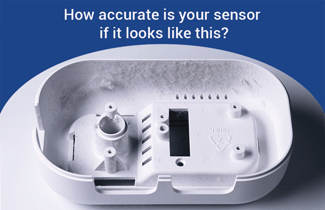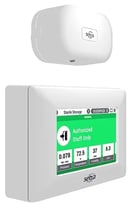For decades, hot-wire anemometers have been widely used throughout hospitals to ensure proper pressurization in critical spaces such as operating rooms and isolation rooms.
However, hot-wire anemometers have several inherent problems and drawbacks that affect performance. By design, air passes through a hot-wire during normal function, making the measurement highly sensitive to dust buildup and differences in air density. The resulting measurement inaccuracies can result in:
- Improper room pressurization
- Excessive force required to open doors
- Room pressure monitor in constant alarm state
- Excessive energy usage and costs to maintain pressurization
Drawbacks of a Hot-wire
An inaccurate hot-wire anemometer can result in insufficient or even opposite pressurization of a room. Such inaccuracies may lead to failed inspections and jeopardizes the health of patients and staff. Maintaining a hot-wire anemometer's accuracy requires frequent cleaning and calibration.

Cleaning dust from a hot-wire anemometer is extremely time intensive and must be performed multiple times a year. A hot-wire cleaning procedure at a large academic hospital has over 50 individual steps that must be repeated with every pressure sensor. Even after this extensive cleaning process, hot-wire anemometers quickly become clogged with dust, degrading the accuracy performance of the sensor in only 6 weeks.
Replace with updated technology

Consider replacing antiquated hot-wire anemometers with Setra's low-maintenance and high-accuracy capacitive transducers. Setra's dead-ended, capacitive transducers do not require air flow through the sensor and do not need the unreasonable maintenance required by outdated hot-wire anemometers. The Setra FLEX Conversion Kit replaces hot-wire anemometer-based room pressure monitors in only 20 minutes without any construction necessary.


